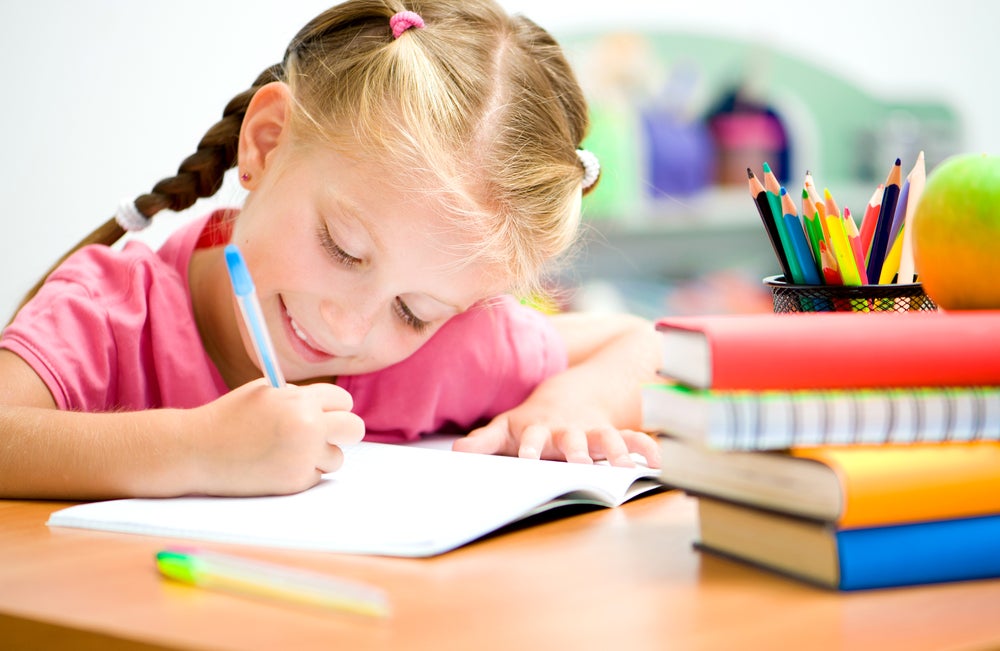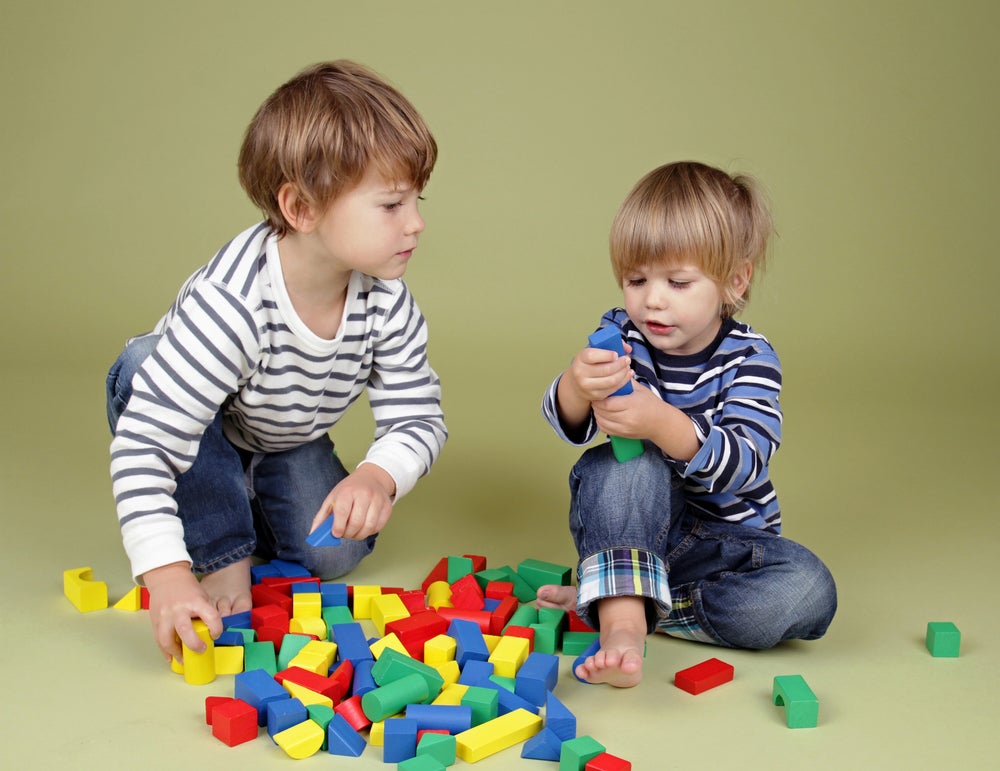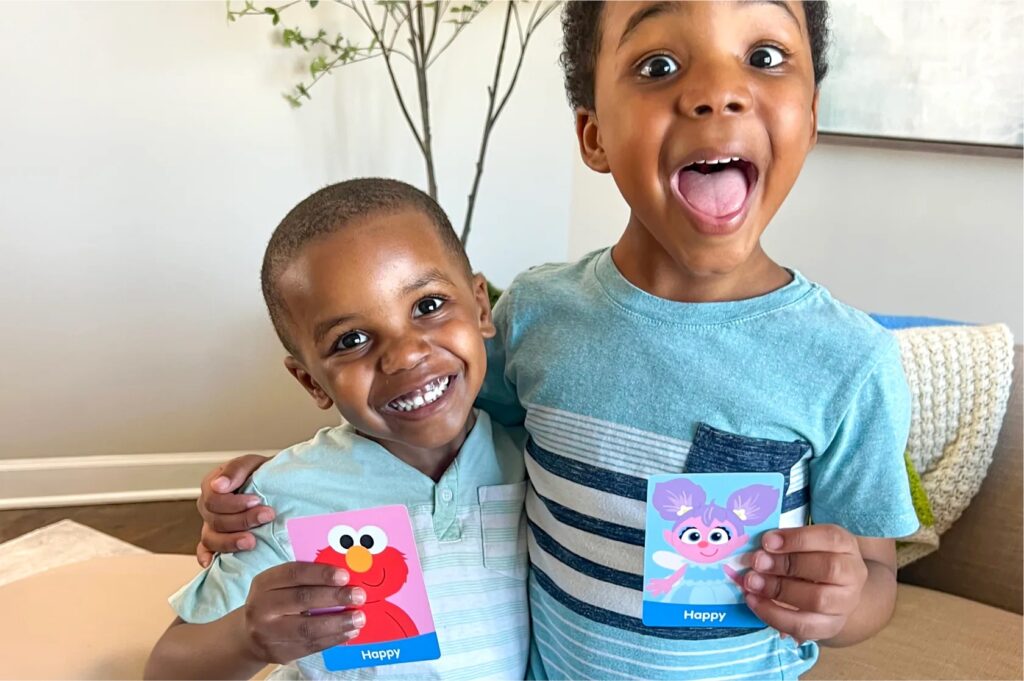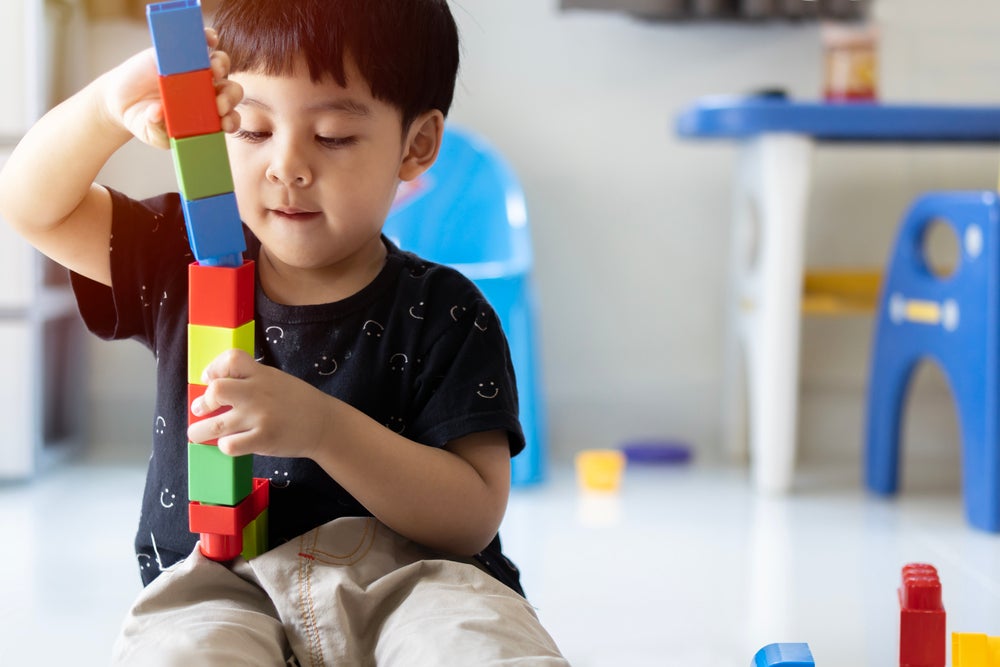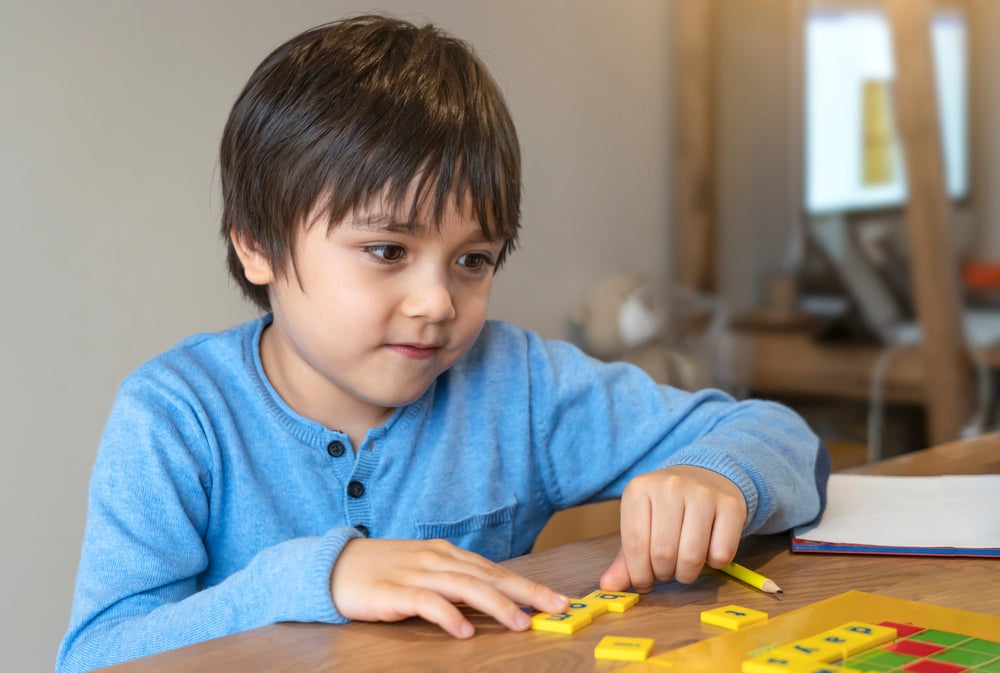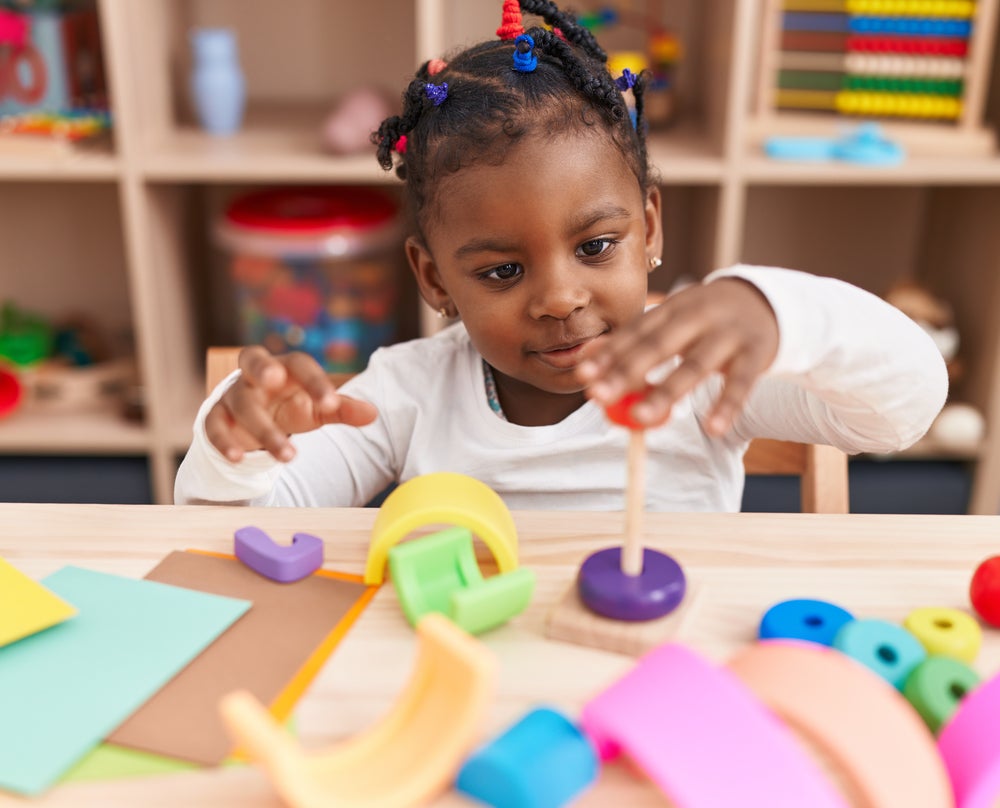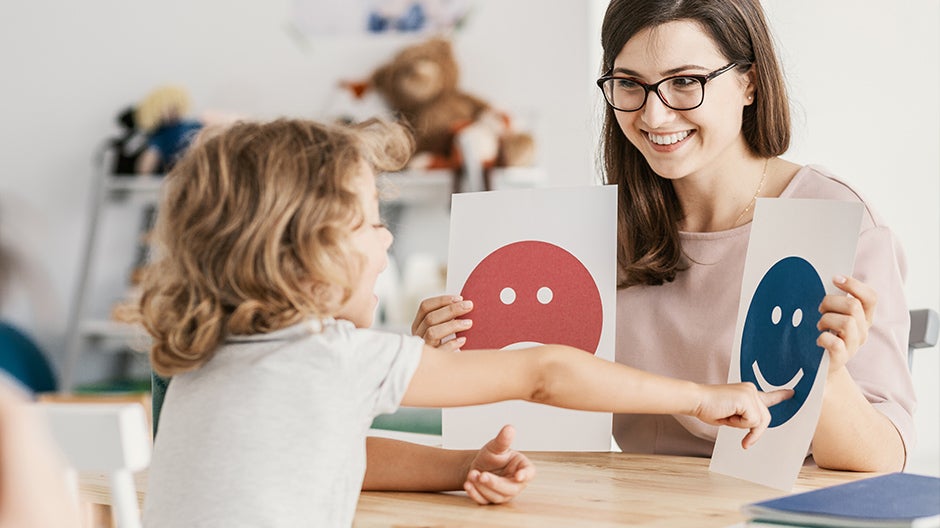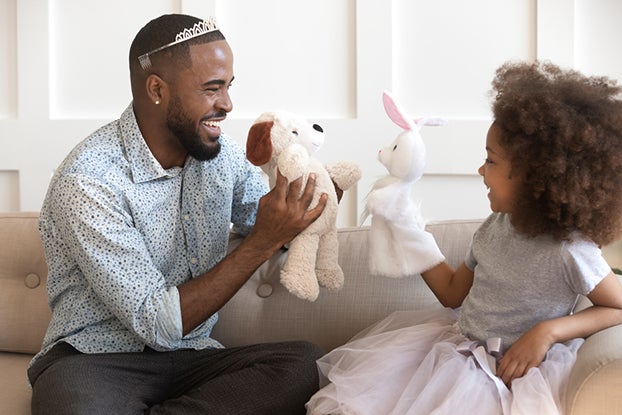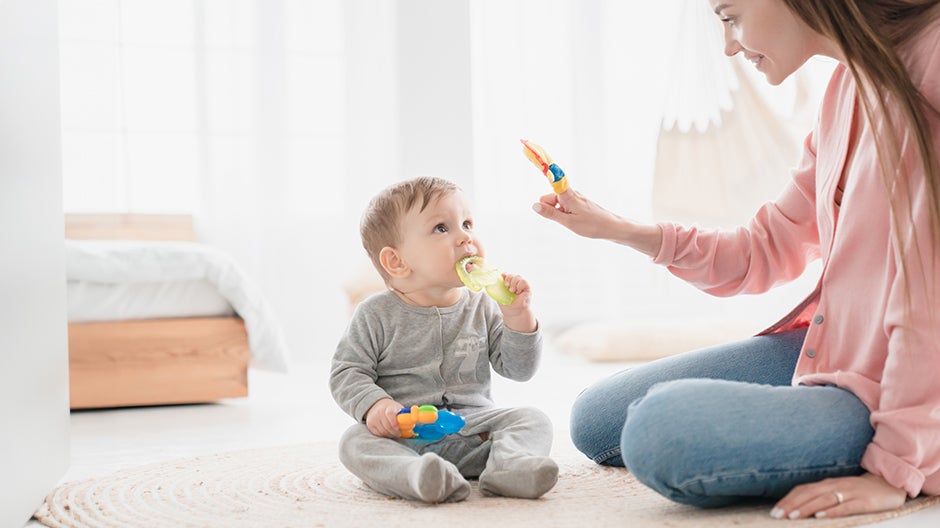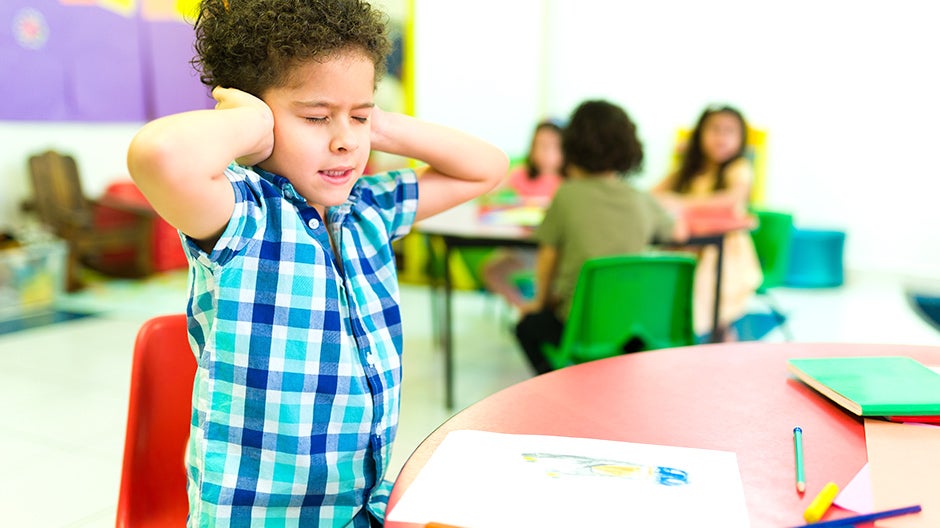Writing isn’t easy for young kids. On top of learning letters, sounds, and spelling, they also have to practice the physical task of making readable letters. It’s a lot of work—and kids want that work to feel exciting.
Writing games to the rescue! Writing games provide natural motivation for kids and are less stressful than many other ways of learning to write. Plus, since they involve other skills, they’re a great way to work on holistic skill development.
How can you help your preschool- or kindergarten-aged child learn to write? And how can you make practicing writing fun?
Read on to find out!
The Short Cut
- Learning to write is essential to developing Core Skills, one of the 5 C’s at the heart of the Begin Approach to helping kids thrive in school and life
- Early learners with strong Core Skills (like reading and writing!) do better in school and build a solid foundation for all other learning
- Writing games work well for teaching kids because they tap into kids’ natural love of play
- A learning membership that grows with your child can help them learn to write through the power of play
15 Writing Games for Preschoolers and Kindergarteners
1. Disappearing Letters

This activity is great for developing your child’s fine motor skills as well as their spelling abilities, which will aid them as they take pencil to paper!
What You’ll Need
- A chalkboard
- Chalk
- A paintbrush
- A cup of water
What to Do
- Write a letter, word, or your child’s name on the chalkboard several times using your chalk. (If you’re writing a single letter, start by writing it five times in a row.)
- Dip the paintbrush in the cup of water.
- Ask your child to trace over each of the letters with the paintbrush, erasing them one by one.
Once your child has mastered one letter, move on to multiple letters until they’re comfortable using this activity to “write” their name and short CVC (consonant-vowel-consonant) words like dog and cat.
2. Hands-On Writing
This activity lets you make writing a fun, sensory experience! Try using different materials to keep your child engaged and help them learn more about the world while they practice their writing skills.
What You’ll Need
- A tray or bin
- A fun material such as sand, flour, or shaving cream—anything that can hold a shape
- A pen and piece of paper (optional)
What to Do
- Grab a tray or bin that’s deep enough to hold your chosen material.
- Fill your tray or bin with sand, flour, shaving cream, or anything else that can be used to form a shape.
- Say a letter to your child (or write the letter on a piece of paper for them to copy, if needed).
- Have them write the letter in the sand, flour, or shaving cream with their finger.
Eventually, you can work your way up to having your child write whole words, like their name or people and things they love (favorite foods or toys, names of friends and family, etc).
Don’t worry too much about what the letters look like—even scribbles are OK! Whatever your child writes to produce a letter or word is great progress.
You could also use a finger painting method for this writing game to work in some colorful fun!
3. Yarn Letters
This game is an effective way for your child to develop their fine motor skills, a key component of writing. It also helps kids continue learning their letters.
What You’ll Need
- Blank sheets of paper
- Pencils
- Yarn
- Child-safe scissors
- Glue
What to Do
- Start with the blank sheet of paper.
- Help your child draw a letter of the alphabet with a pencil.
- Hand them the yarn, scissors, and glue.
- Help them trace the letter with the yarn, then cut and glue the yarn onto its shape.
Having kids make their name can be a fun way to create a piece of art to put on the door of their room, their bed, or their place at the table.
4. Squishy Bags
These bags give your child a great sensory experience too!
What You’ll Need
- 1 cup of flour
- 6 tablespoons of water
- Food coloring
- Ziplock lunch bags
- Tape
What to Do
- Put the flour into a bowl.
- Add a few drops of the food coloring.
- Add the water.
- Mix it all together.
- Pour the mixture into the ziplock bag.
- Lay the bag flat on a table and push the air out of it.
- Seal the bag and tape across the opening for extra reinforcement.
Your child can use their finger, a small paintbrush, or even a cotton swab to write letters, their name, or other words by pressing on the squishy bag and moving the mixture around.
5. Name Pop
If your child hasn’t learned how to write their name yet, this could inspire them to try!
What You’ll Need
- Bubble wrap
- Permanent marker (for you!)
What to Do
- Cut a piece of bubble wrap long enough to fit all of the letters in your child’s name.
- Flip the bubble wrap over, so you’re writing on the non-bubble side, and write your child’s name—backwards!
- Flip the wrap back over and give it to your child.
- Ask them to trace their name with their finger by popping each bubble as they go.
Popping the bubbles slows your child’s hand as they trace their name so they can really get a sense of the shapes of the letters.
6. Play Dough Name
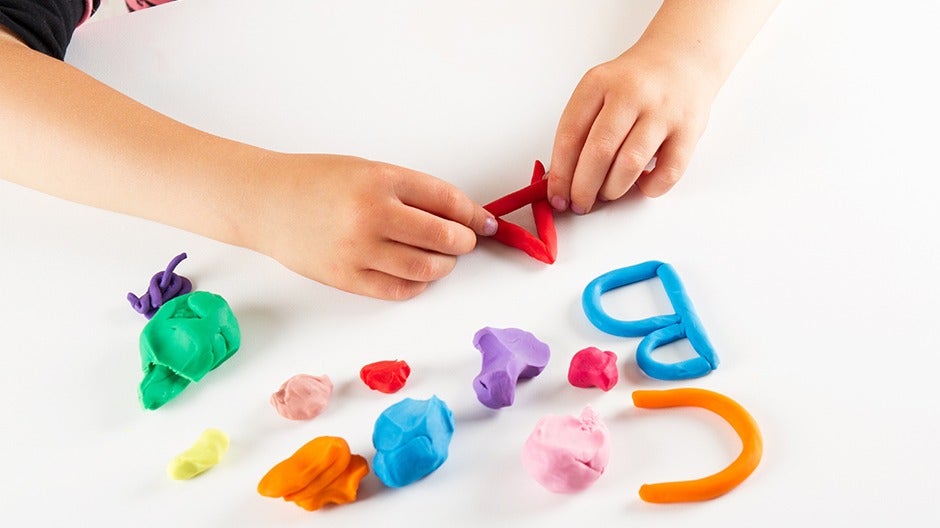
What You’ll Need
- Play dough
- Colorful straws
- Knife (for the adult!)
What to Do
- Cut the straws into pieces about 2 inches tall.
- Ask your child to flatten a ball of play dough into a circle.
- Draw the first letter of their name in the dough using the knife.
- Ask your child to place the straws along the lines you’ve created.
You can do this with all of the letters of their name!
7. 3D Drawing
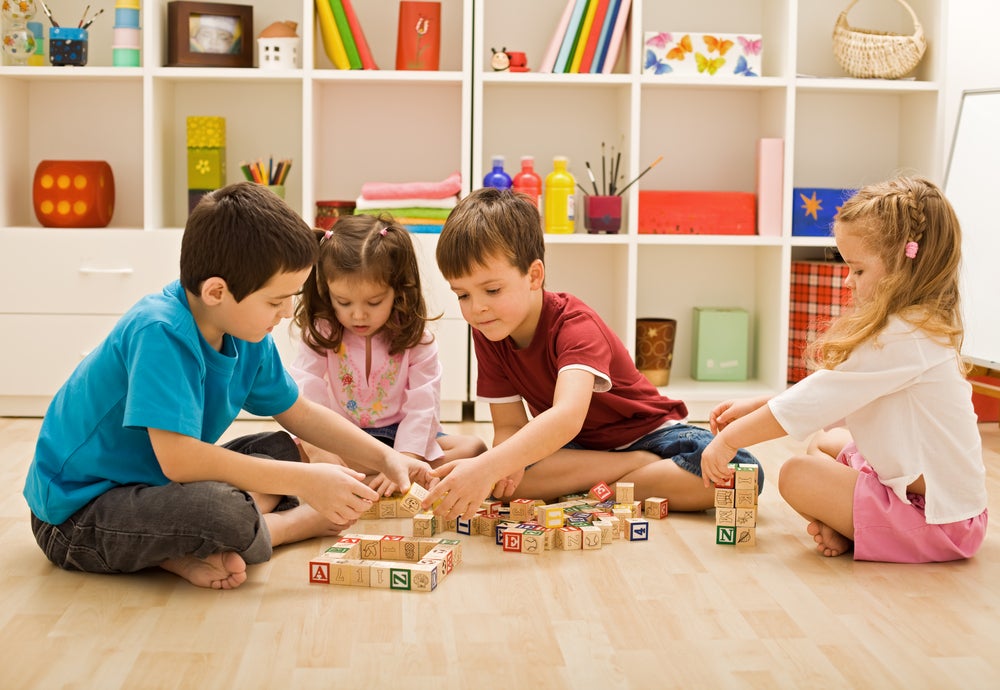
The more ways you can approach writing the better! Some kids love tactile play, which can be a great way to get them engaged with letters!
What You’ll Need
- Plastic bricks (like Legos) or other building blocks
- Paper
- Marker
What to Do
- Draw your child’s name (or the first letter of their name) on a piece of paper.
- Work together to build the letter(s) out of plastic bricks or blocks.
8. Glitter Glue Lines
Tracing lines with glue gives kids good practice for forming letters (which are made of straight and curved lines). They also develop hand and arm strength as they squeeze the glue bottle.
What You’ll Need
- Glitter glue in bottles
- Scissors
- Card stock
- Marker
What to Do
- Draw horizontal lines on a piece of card stock. Make some straight and some wavy. You can even draw shapes if you want to.
- Give your child a glitter glue bottle.
- Ask them to squeeze the glue onto the lines you’ve drawn.
- See how far they can get on the line before they have to re-squeeze.
- After the glue dries (this might take a few hours), ask your child to trace the glue lines with their finger.
9. Letter Matching Game

The more your child understands the connection between a letter on the page and the sound it makes, the stronger their foundation for reading and writing will be.
What You’ll Need
- Paper (index cards work well)
- Markers
What to Do
- Write individual letters on index cards.
- Give your child one card.
- Ask them what sound the letter makes. If they don’t know, tell them.
- Give them the task of finding 10 objects in your home that begin with that sound.
- Ask them to bring the objects into one central place.
- Write the word corresponding to each object on another index card so your child can see the letters that make up the word. (For instance, if they bring you a book, you write book on an index card.)
10. Alphabet Hopscotch
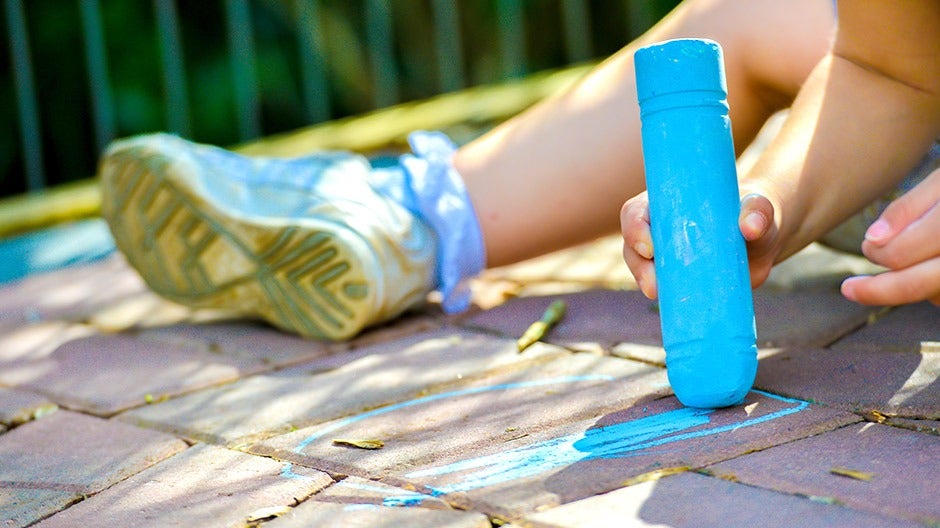
Combine gross motor skill work with literacy work with this activity. If it’s a nice day outside you can use chalk directly on a sidewalk. If you’re playing inside, drawing on pieces of paper works well too.
What You’ll Need
- Chalk or markers
- Sidewalk or paper
What to Do
If playing inside:
- Draw letters onto pieces of paper (one letter per piece).
- Lay them on the floor in a traditional hopscotch grid format.
If playing outside:
- Draw a traditional hopscotch grid on the sidewalk using chalk.
- Write individual letters inside each box.
Once your grid is ready, say a letter that’s on the grid and ask your child to jump to it, naming the letters they step on as they move.
11. Roll & Rhyme
What You’ll Need
- Dice
What to Do
- Choose a simple word, like cat.
- Give your child a die to roll. Ask them to roll it.
- Ask them which number appears.
- Have them say that many words that rhyme with the original word. (If it’s a 1, your child has to say one word that rhymes with the word you chose at the beginning, like bat. If it’s a 2, your child has to say two words that rhyme with the word you chose, like bat and mat.)
- Switch and have your child choose the word and you find the rhymes.
You can try a more challenging version of the game by using both dice.
12. Jenga Writing
Remember the game Jenga? Those small rectangular wooden blocks that you stack on top of each other until you build a tower—and then piece by piece, you have to take it apart without the whole thing crashing down? Try this variation on the game!
What You’ll Need
- Jenga pieces
- Marker
- Tape
- Paper or blank stickers (if you don’t want to draw on your game pieces)
- Scissors
What to Do
- Write a letter on each end of the Jenga pieces. (Each piece gets the same letter on its two ends.) If you want to preserve the pieces, tape small pieces of paper to the blocks or use stickers instead of writing directly on them.
- Build the Jenga tower.
- Choose a simple word (like cat).
- Pull the Jenga pieces from the tower to make the word. (In this case c, then a, then t.)
- Play until the tower falls down!
13. Homemade Pictionary

What You’ll Need
- Paper
- Markers or pencils
What to Do
- Generate a list of easy-to-draw consonant-vowel-consonant words (like cat, top, and mop) with your child.
- Write them on small slips of paper.
- Put them all in a pile, face down.
- Take a piece of paper and a marker or pencil for yourself and your child.
- Choose a word from the pile and draw a picture of it.
- Try to guess which word each of you picked.
14. Reading Relay Race
This one is great for a small group of kids.
What You’ll Need
- Dry erase board
- Dry erase markers
- Pens
- Paper
What to Do
- Like in the Pictionary game above, generate some simple words with the kids.
- Write the words on the board or a large piece of paper.
- Give each child a marker or pen.
- Pick a start line and have all of the kids line up there.
- Stand a distance away with the board or paper.
- Tell the kids to race to one of the sight words. (Instead of saying, “On your mark! Get set! Go!”, you might say, “On your mark! Get set! DOG!”)
- Have the kids run to the board or paper and put their hand on the correct word.
- Whoever gets to the right word first wins!
15. Letter Dance

Prewriting activities can be whole-body experiences. In this game, kids write letters in the air by reaching as high as possible, crouching low, and swaying side to side. This Letter Dance helps your child solidify their understanding of the shapes of letters.
It’s also a fun one with a group of kids!
What You’ll Need
- Scarves
- Ribbons
- Crepe paper
- Blackboard and chalk (or whiteboard/marker or paper/marker)
What to Do
- Write a letter on the blackboard, whiteboard, or paper.
- Trace the letter, naming the directions you move your finger to draw it. (“I’m going up, then around, then down…”)
- Ask the kids to trace the letter too.
- Have each child pick up a scarf, ribbon, or piece of crepe paper. (You can pick one up too!)
- Ask the kids to draw the letter in the air using big, dramatic movements.
- Do this a few times with different letters.
A fun finale to this game is to put on some music and have the kids create a dance using all of the letter movements they’ve practiced!
Why Writing Games Are Important for Learning
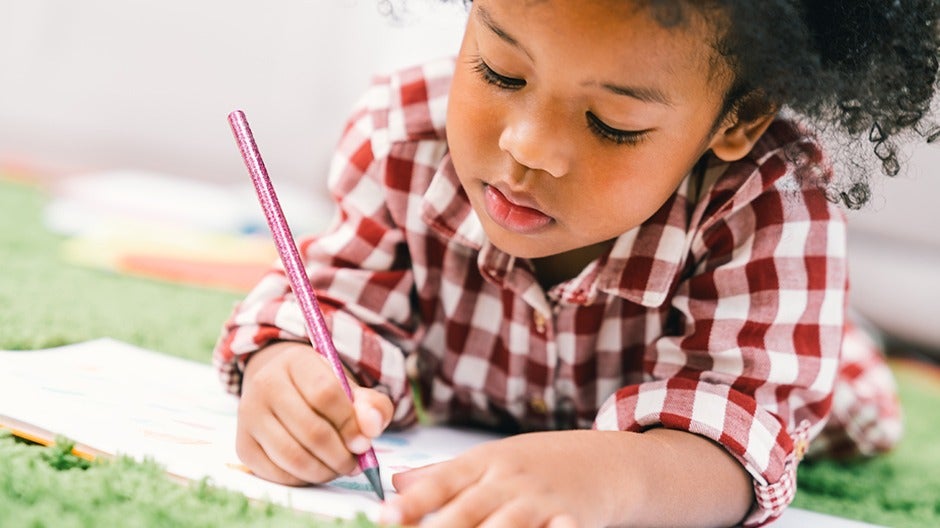
Until you try some of these writing games for yourself, you may be wondering why you should incorporate games into your child’s learning.
Why can’t they just sit down with a pen and paper to practice writing?
1. Less Stressful Learning
Being asked to sit down and practice writing skills can be daunting for some kids. It can also be frustrating when they come across letters or words they struggle with.
Games, on the other hand, decrease stress levels and get children excited about learning.
2. Motivation
Providing natural motivation is one of the biggest advantages of playing writing games.
Kids are more likely to pay attention to the instructions and participate when they see the activity is fun. This is much more effective for teaching writing (and other skills) than simply handing them a worksheet.
3. Holistic Skills
By nature, most games require participants to incorporate Critical Thinking skills (another of the 5 C’s), planning, and Creativity (yet another of the 5 C’s!). They’re a great way to build a set of holistic skills that helps kids in many areas of life.
So let the games begin!
4. Different Ways to Learn through Play
Kids have different preferences when it comes to how they play. Some people prefer auditory games. Some prefer physical ones, or getting creative.
Having a bunch of different games to cycle between gives you the best chance to connect with what your child is most interested in on that day. That helps keep them engaged with the game.
And when they’re engaged, they’re learning!
We chose the fifteen writing games above with that in mind. Name Pop and Reading Relay Race are auditory, while the Letter Matching Game is more visual. Disappearing Letters and Homemade Pictionary highlight creativity, and Squishy Bag, 3D Drawing, and Letter Dance are tactile games.
There should be something for everyone!
More Writing Games with Begin
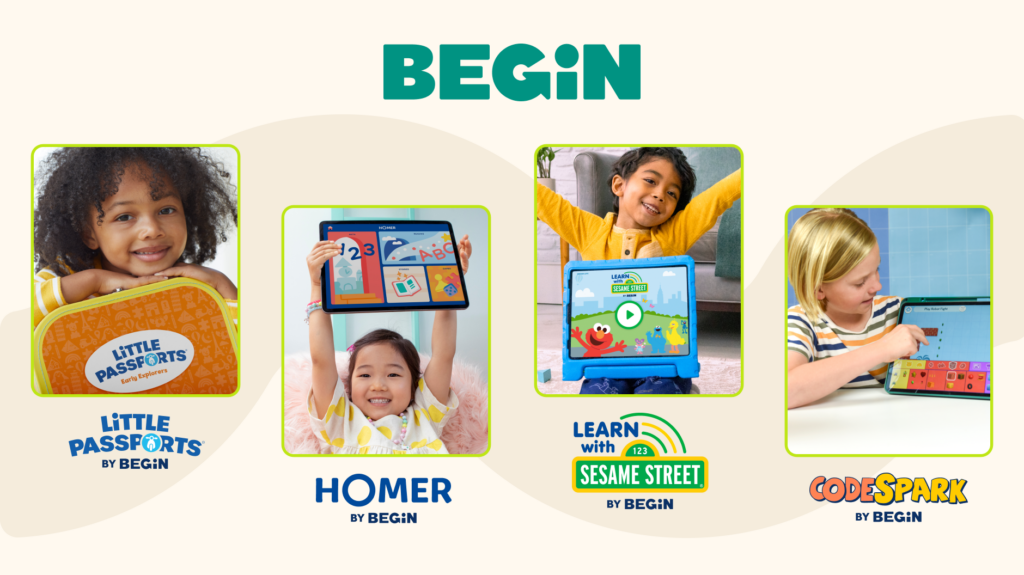
From tactile writing games with blocks and play dough to auditory games with music and reading words aloud, there are so many ways to teach your child the foundational skills for writing—while having a good time!
For even more writing fun, check out our age- and stage-matched learning membership, which incorporates literacy learning at the right time and in the right way for every child.
Take our membership quiz and see which stage fits your child today!
